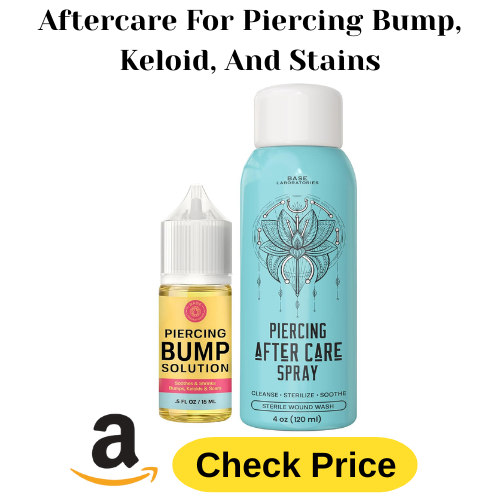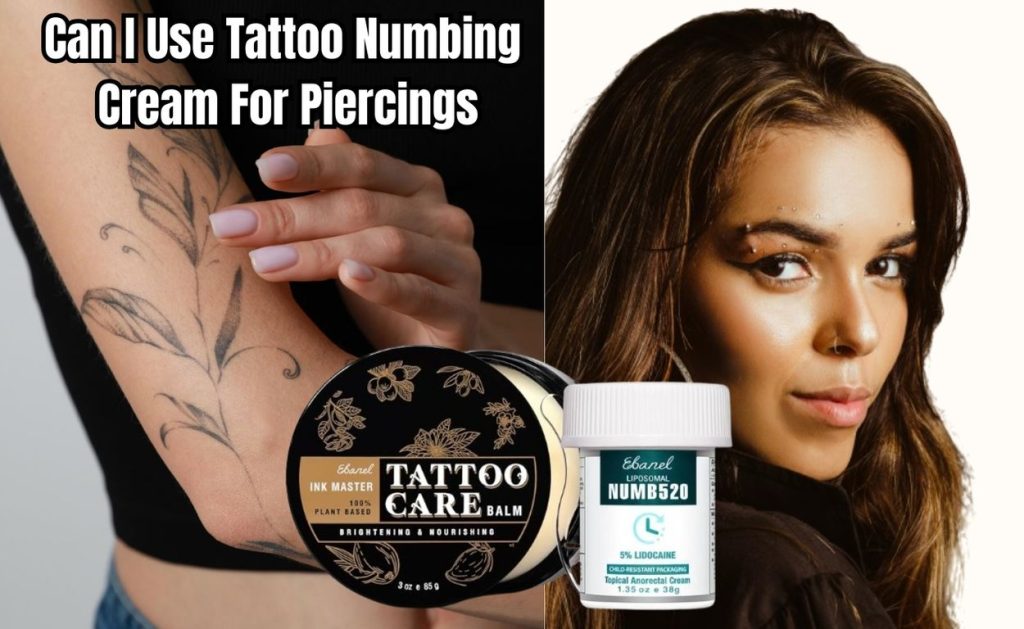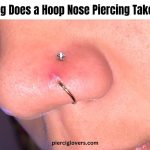Yes, you can use tattoo numbing cream for piercings. Tattoo numbing creams, which contain anesthetic ingredients like lidocaine, can help reduce pain and discomfort during the piercing process. However, it’s important to use these creams properly and consult with your piercer before applying them.
The effectiveness of the numbing cream can vary depending on the type of piercing and individual pain tolerance. While it can make the process more comfortable, it’s not a guaranteed solution for everyone.
Things To Consider Before Applying Numbing Cream For Piercing
So you already know that you can use numbing cream for your piercing, but the question is do numbing creams work for piercings. Of course, it works, but you should consider something before applying numbing cream for piercing. Here are the things that you should consider:
Consulting with Your Piercer
Before using any numbing cream, it’s crucial to consult with your piercer. They can provide guidance on whether the cream is appropriate for the type of piercing you want and ensure that it won’t interfere with the procedure. Some piercers might have specific recommendations for products that work best.
Choosing the Right Numbing Cream
Not all numbing creams are created equal. Look for creams specifically designed for skin use and ensure they contain a safe amount of anesthetic. Products with lidocaine are commonly used because they are effective and widely available. Make sure to purchase from reputable brands to avoid substandard products.
Effectiveness And Limitations Of Tattoo Numbing Cream For Piercings
While numbing creams can be effective, their success varies from person to person. Factors that influence effectiveness include:
- Skin Thickness: Areas with thicker skin might require more potent numbing agents.
- Type of Piercing: More complex or deeper piercings might still cause discomfort despite the cream.
- Individual Pain Tolerance: Everyone has different levels of pain tolerance, which can affect how well the cream works.
Potential Side Effects Of Tattoo Numbing Cream For Piercings
Be aware of potential side effects when using numbing cream. Common side effects include:
- Skin Irritation: Redness, itching, or swelling can occur if you’re sensitive to the cream.
- Allergic Reactions: Test the cream on a small patch of skin first to check for allergic reactions.
- Overuse Issues: Applying too much cream can cause numbness beyond the desired area or other adverse effects.
Different Piercing Types And Tattoo Numbing Cream For Piercings
The effectiveness of numbing cream can differ based on the type of piercing. For example:
- Ear Piercings: If you want to know can you use tattoo numbing cream for ear piercing then the answer is yes. Generally, numbing cream is quite effective for ear lobes and cartilage piercings.
- Nose Piercings: Can you use numbing cream for nose piercing? yes, but these can be more painful, and numbing cream can help, but some discomfort might remain.
- Body Piercings: Numbing creams can help with belly button or nipple piercings, but pain levels can still vary.
Frequently Asked Questions
Q: Can tattoo numbing cream be used for all types of piercings?
A: Yes, tattoo numbing cream can be used for various types of piercings, including ear, nose, and body piercings. However, its effectiveness may vary depending on the location and depth of the piercing.
Q: How long before my piercing appointment should I apply the numbing cream?
A: Typically, you should apply the numbing cream 30 to 60 minutes before your piercing appointment. This allows enough time for the cream to take effect and numb the area.
Q: Is it necessary to cover the numbing cream with plastic wrap?
A: Yes, covering the numbing cream with plastic wrap can enhance absorption and ensure the cream stays in place, maximizing its effectiveness.
Q: Are there any side effects of using tattoo numbing cream for piercings?
A: Potential side effects include skin irritation, redness, itching, swelling, and allergic reactions. It’s important to test the cream on a small patch of skin before full application to check for any adverse reactions.
Q: How effective is numbing cream for reducing piercing pain?
A: The effectiveness of numbing cream can vary from person to person. Factors such as skin thickness, type of piercing, and individual pain tolerance all play a role in how well the cream works.
Q: Can I apply numbing cream myself, or should a professional do it?
A: You can apply numbing cream yourself, but it’s important to follow the instructions carefully. Consulting with your piercer beforehand can provide additional guidance and ensure proper use.
Q: Can I use any numbing cream, or should I choose a specific type?
A: It’s best to choose a numbing cream specifically designed for skin application and containing safe anesthetics like lidocaine. Avoid substandard products by purchasing from reputable brands.
Q: Will numbing cream completely eliminate the pain of a piercing?
A: Numbing cream can significantly reduce pain, but it might not eliminate it completely. Some discomfort might still be present, especially for more complex or deeper piercings.
Q: Can numbing cream interfere with the piercing process?
A: If used correctly, numbing cream should not interfere with the piercing process. However, it’s crucial to consult with your piercer to ensure it doesn’t affect the procedure.
Final Words
Tattoo numbing cream can be a useful tool to reduce pain during piercings, but it’s not a one-size-fits-all solution. Consulting with your piercer, choosing the right product, and following instructions are key steps to ensure a more comfortable piercing experience. Remember, while numbing cream can help, some discomfort might still be present, and individual experiences will vary.




